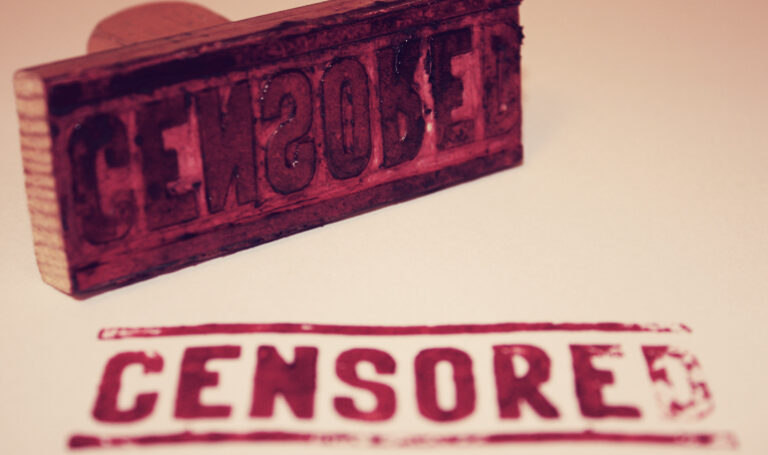The Lingering Effects of Trauma in A Chronology of Water, Something Disguised as Love, and Smadar

Humankind, although it may be an ugly truth, has always been fascinated by misery and evil—and nothing, in this vein, is more striking than the misery of a child in an unsafe environment, or the evil of the people who have created that environment. When the creators of the Nightmare on Elm Street franchise were coming up with the back story for Freddy Krueger’s character, they chose to make him a child molester—they figured no crime was more abhorrent or unforgivable. And indeed, for years and years, depictions of child abuse would generally portray the perpetrator as a barely-human monster without a complex psychology, and the child as a frightened mouse who is nevertheless only afraid in the presence of their abuser, and somehow capable of choosing between submission and bravery. What has not been limited is the depiction of the violence itself, which has often been used gratuitously for the sole purpose of audience titillation. Such performances offer the queasiness that comes from straddling the shameful line between disgust and arousal.
I don’t think it’s an exaggeration to say that the #MeToo movement has transformed our lives and our society not only by exposing the prevalence and institutionalization of sexual and gender-based abuse, harassment, and mistreatment, but also by redefining where abuse begins and ends, and by honoring a survivor’s right to privacy by putting the emphasis on the meaning of the injustice rather than its minute details. We are now gaining a deeper cultural understanding of what it means to live in an abusive relationship, and of the ramifications abuse can have on the rest of our lives, outside of the rooms in which it takes place and often for years after it has ended. We are also learning that knowing the details of how and where these survivors were hurt contributes nothing to societal improvement—it only feeds our hungry imaginations, and can easily become pornographic, triggering, and traumatizing, even for those with no similar personal experience.
This new understanding of how trauma lingers inside and outside of the body has expanded to include not only relationships between peers of the same age group, but seems to have grown over time to include a discussion of how adults teach children about their place in the world, and, relatedly, about physical and emotional mistreatment, sexual or not. Recently, I have noticed a prevalence of books—both brand new and from earlier this decade—that deal with this very subject.
Lidia Yuknavitch’s memoir, A Chronology of Water, from 2010, for example, tells the story of her escape and recovery from a childhood spent with a sexually and emotionally abusive father and a mother with alcohol use disorder. Full of stumbling, failure, and hope, Yuknavitch’s book is unflinchingly honest about both the abandonment she experienced while in her parents’ care, in which she was used as an instrument for the fulfillment of her father’s need for control, and about the sexual abandon and self-sabotage she put herself through later in life, as her emotional wounds led her over and over again to choose unstable relationships, drug misuse, and sex as means of dulling and distracting herself from the constant pain she was in. As she travels back and forth in time, connecting her love of swimming to her discovery of writing as an outlet, and the stillbirth she underwent and the birth of her “alive boy,” Yuknavitch returns over and over again to the ways in which her father spoke to her and the ways he taught her to see herself, offering only snippets of the molestation itself—glimpses of nudity and fondling that are shown as if through a veil of mist, enough to express the severity and urgency of a girl’s living situation, but not so much that readers shift their focus from the atrocity being perpetrated to debasing curiosity.
Galia Oz’s memoir, Something Disguised as Love, published in Israel earlier this year, does offer some descriptions of the non-sexual physical violence she endured from her father (celebrated Israeli author Amos Oz) but puts a greater emphasis on the emotional abuse he perpetrated—the moments when he asserted his control over her through manipulation, intimidation, gaslighting, stalking, and an incessant rewriting of history, utilizing friends and other family members to pressure her into rejecting what she knew to be true. Oz explains that even as a rehabilitated adult she had to continue to contend with self-doubt and shame, and offers a profound examination not only of her own psyche but of her father’s, exploring the malignant narcissism that informed his behavior and the story he told himself in order to be justified and excuse his own actions. It is this lens that turns the book from a sensational take-down of a beloved cultural figure into an in-depth, heavily researched examination of the roots and repercussions of emotional abuse and the ways in which its pain lingers.
A fictional yet startling account of a different abusive scenario is presented in Smadar, a novel by Merav Nakar-Sadi published in Israel in 2018, which narrows the lens onto one summer in the life of a teenager whose mother flees with her after years of domestic violence suffered by both of them at the hands of her father. The situation is complex—the father is the more outwardly violent of the two parents, yet the mother is said to beat her children as well and is the more unstable caretaker when it comes to holding down a job or the ongoing care of her children. It is insinuated that Smadar is the only one of the four children her mother takes with her when she escapes because she is the only one the father also sexually molests. In this book, like those by Yuknavitch and Oz, depictions of violence and molestation are few and sparse. Told from the point of view of the teenager, readers learn of these incidents through brief allusions to a father who comes into her room at night, a mother who panics when her daughter gets her first period, and the fact that this teenager is terrified to step outside of her grandfather’s house, where she stays after the pair flees. There, her distress ignored by her mother, who seems either too unwell or too ignorant to offer any help, Smadar neglects her friendships and becomes obsessed with the advances of another older man. She can’t stop masturbating whenever she worries about her own safety or her mother’s. Smadar’s trauma doesn’t end just because she is out of the house where it happened and away from her father’s grip. The schism brought on by the violent parenting she experienced clearly affects her pattern of sexual stimulation. Confusing sex with affection and fear with arousal, the book is like an arrow pointing to a dangerous path ahead, of promiscuity coupled with shame.
I am not a gentle reader. I will look violence in the eye when it is shown to me, but I think it is the prerogative of those who have suffered to decide just how little or how much of what they had endured to reveal. These authors demonstrate this autonomy, and, to the benefit of all readers, explore deeply what remains after abuse has passed: a body taken over by a mind or a mind taken over by a body. A brain that will struggle to rewrite memories, doubting its own experiences. A mind that has misunderstood, and may continue to misunderstand, abuse as love—the only form some children ever know. For some people, this manifests in adulthood as a skittishness around any kind of touch, even of the most innocent variety. For others, it evolves into an over-reliance on sexual satisfaction as a means of feeling acknowledged, or as a distraction from pain.
Trauma doesn’t go away when the abuse stops. Pain does not subside when the hurting ends. The process is complex and varies from one survivor to the next. Those who have been victimized can experience their victimhood even when their abuser is not physically around them, no longer threatening them, or even dead. Residual pain and fear can manifest in different areas of life for years to come and may be invisible to everyone else. Each survivor will come out of the experience with a different outlook.
Similarly, and perhaps frighteningly, or uncomfortably, abusers are people too, and some of them manifest as perfectly normal in every other context (as demonstrated powerfully by this article by William Warwick). Perceiving and portraying them child abusers as two-dimensional monsters risks missing the warning signs or ignoring survivors’ accounts when their abusers don’t fit the villain stereotype. We must acknowledge that even the people we love and trust are capable of awful deeds, and we must listen when someone tells us that they did them. Moreover, since we can’t make people who abuse (or abuse itself) simply disappear, we as a society have a vested interest in analyzing and understanding their psychologies and increasing their chances of rehabilitation. In the long run, being able to do this would offer a better chance of recovery for both adult and child.
How similar or different to each other survivors, or abusers, are is not as crucial as the attention we as a society must pay to their journeys—not just to what they suffered from, but how they suffered and what sort of scars this suffering left, the specific fears and behavior patterns these scars have borne, and the ways in which what they’ve been through has affected who they are today. The better we understand this trauma and its outcomes, the better support and empathy we can offer them in all areas of life.
This piece was originally published on June 7, 2021.


